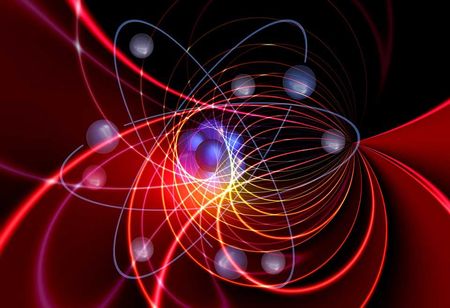
Breakthrough in Quantum Physics: A New Technique to Measure Properties of Quantum Materials


CEO Insights team, Press Release
The new technique is used for measuring the characteristics of quantum materials at superconductive state induced by high pressure (tens of thousands times of atmospheric pressure) and cryogenic temperature ( about -266℃, close to absolute zero) conditions. If superconductivity could be achieved at temperatures where special low temperature apparatus is not needed, it would lead to revolutionary applications like superconducting transmission lines, Magnetic Resonance Imaging, Maglev Train and so on.
A lot of research has been going on in the study of quantum materials and its application in recent years as quantum materials exhibit superconductivity at cryogenic temperatures. Applying high pressure at low temperature to quantum materials provides interesting observations and results as to how electrons interact with each other and is a powerful tool in the study of quantum materials. For example, using high pressure, the superconducting transition temperature range of BaFe2(As,P)2, can be adjusted over 30K. The effects of low temperature and high pressure on quantum materials could be found out by detecting the changes in the magnetic field in the vicinity of the superconductor. However, the measurement of characteristics at high pressure is challenging as traditional magnetic measurement circuits cease to function at high pressure environments. It is at this juncture that the new technique attains the most significance. It can lead to advanced research in the field of quantum physics and superconductors
Mapping out magnetic field with nano-diamond colour centres:
A common crystal defect, the colour center makes the diamond appear in different colours and this enables this new technique to be a powerful quantum sensors and critical in future quantum related technologies. A particular colour center named negatively charged nitrogen vacancy (NV) is very sensitive to magnetic
The high sensitivity of NV centres is not limited to magnetic field but also local electric field and mechanical strength
and electric signals, mechanical forces and temperature. When the NV centers are negatively charged and exposed to different frequencies of microwave, changes in the magnetic field can be inferred by observing the intensity and the frequency of light emitted from the NV centres. The CUHK researchers establishes that NV center could be used as a quantum sensor to study the physical properties of superconducting materials under extreme conditions of low temperature and high pressure, and accurately measure the local magnetic field distribution and critical field for observing the Meissner effect, an effect produced when materials enter superconductivity state that expels all the external magnetic field and make the material perfectly diamagnetic.
The research team kept a sample of the quantum material and a collection of nano diamond in high pressure chamber and then pressed and cooled the chamber down to make the sample a superconductor and with the sensing capabilities of NV centres, the magnetic field texture around the superconductor was mapped out.
“In our research, the diamond particles around the superconductor act as vector magnetic field sensors. This is the first time we can literally look at the Meissner effect under high pressure,” said Professor Goh. “This would bring high-pressure superconductivity research onto another level.”
Professor Yang added, “The high sensitivity of NV centres is not limited to magnetic field but also local electric field and mechanical strength. Hence, this versatile technique is expected to contribute to a better understanding of material properties. Consequently, the technique will revolutionise the design of quantum materials that can be commercialised, eventually bringing benefit to society. The advanced measurement technique developed here will also enhance Hong Kong’s capability in the fields of metrology and high-precision instrumentation.”
The research done in Hong Kong was supported by grants from CUHK and the Research Grants Council of Hong Kong. The high quality single crystals of BaFe2(As,P)2 used in this work were prepared and characterised by the teams at Kyoto University and The University of Tokyo. Their study was published in the prestigious journal Science, alongside two similar works reported by the teams from the University of Paris-Saclay and UC Berkeley. The authors of the paper published in Science also include five postgraduate students from the Department of Physics, CUHK, who are King Yau Yip, Kin On Ho, King Yiu Yu, Yang Chen and Wei Zhang.